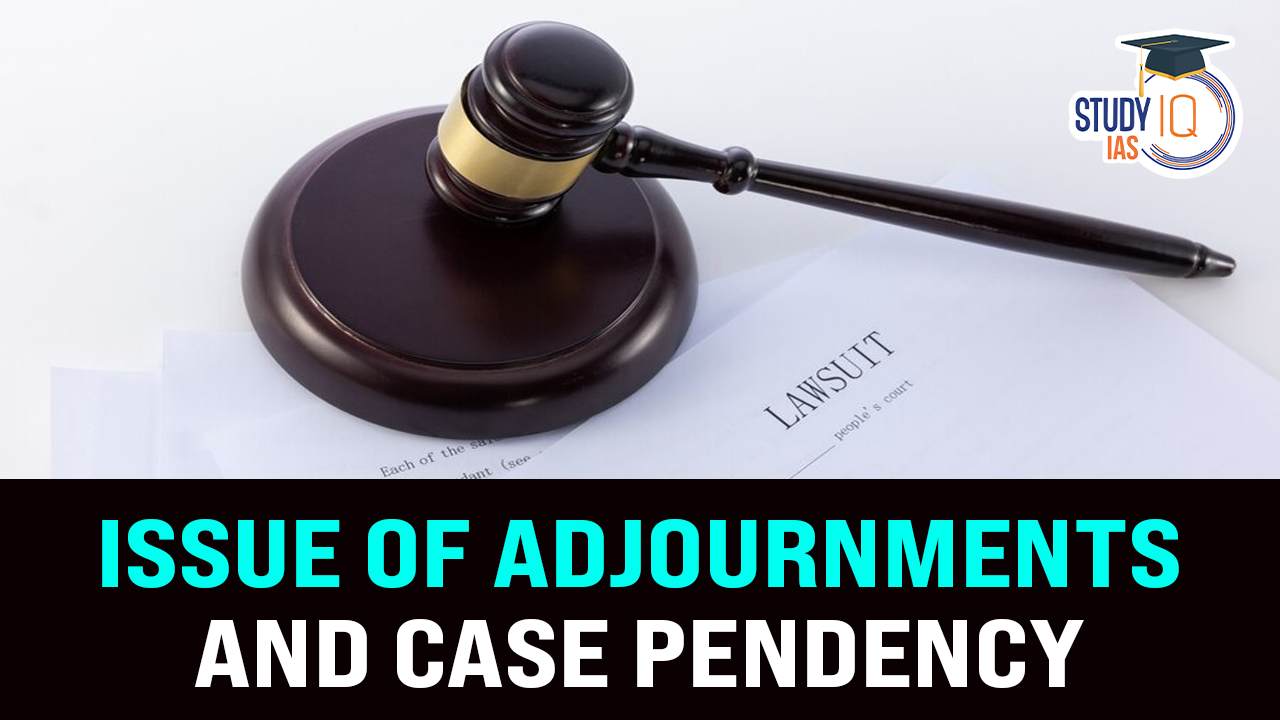Table of Contents
In September 2024, President Droupadi Murmu addressed the National Conference of District Judiciary in New Delhi, emphasising the urgent need to eliminate the “culture of adjournments” in Indian courts.
Key Concerns Raised
- Fear of Litigation: President Murmu noted that many individuals, especially from rural areas, hesitate to seek justice due to the lengthy processes associated with court cases.
- This fear leads them to endure injustices rather than risk the uncertainties of legal proceedings.
- “Black Coat Syndrome”: She coined this term to describe the anxiety and stress experienced by ordinary citizens in courtrooms, akin to the “white coat syndrome” in medical settings.
- This phenomenon reflects a broader issue of public trust erosion in the judiciary when cases extend over decades.
- Judicial Pendency: The pendency of cases is a significant challenge, with some cases taking between 10 to 32 years to resolve.
- This delay undermines public confidence in the judicial system
Historical Context and Current Judicial Framework
- India’s judicial system has evolved since British rule, with civil courts handling various civil issues under the Code of Civil Procedure and criminal courts addressing criminal matters under the Criminal Procedure Code.
- The Supreme Court and High Courts also play critical roles in constitutional matters through writs and appellate powers.
- Despite these frameworks, significant challenges persist:
- Tribunal System Introduction: To alleviate burdens on civil courts, specialised tribunals were introduced via the 42nd Constitutional Amendment Act in 1976.
- However, many cases still fail to meet statutory timelines for adjudication.
- Tribunal System Introduction: To alleviate burdens on civil courts, specialised tribunals were introduced via the 42nd Constitutional Amendment Act in 1976.
Causes of Judicial Delay
- Judge-to-Population Ratio: According to a 2024 Law Ministry report, India has only 21 judges per million people, falling short of the Law Commission’s recommendation of 50 judges per million.
- Judicial Vacancies: Delays in filling judicial vacancies create backlogs. The Law Minister reported significant vacancies, with High Courts operating at a 30% vacancy rate as of October 2024.
- Additional Charges on Judges: Judges often handle multiple courts simultaneously due to staffing shortages, which leads to increased workloads and potential errors in judgment writing.
- Judges, particularly at the district level, manage numerous tasks, from case trials to bail and remand proceedings.
- They may handle up to 100 cases a day, which, when coupled with additional responsibilities, can lead to stress and potential judgment errors.
- These errors may then result in appeals, adding to delays
- Legislative Impact: New laws frequently lack a judicial impact assessment, meaning there is often no analysis of how many cases a new law might generate or what resources might be required.
- Witness Delays: Slow processes in bringing witnesses to court contribute to prolonged case resolutions..
|
Specific Data on Case Backlog |
High Courts:
Supreme Court:
|
Proposed Solutions to Address Judicial Delays
- Judicial Impact Assessment: The Justice M. Jagannadha Rao Committee recommended conducting a judicial impact assessment for every proposed Bill to estimate case generation and required resources.
- The Supreme Court supported this recommendation in Salem Advocate Bar Association (II) vs Union of India (2005).
- Early Vacancy Filling: High Courts and State governments should initiate vacancy-filling processes in the district judiciary six months in advance.
- No Additional Charges: Judges should not be assigned additional court responsibilities, allowing them to focus on their own cases for efficient and accurate judgments.


 India's Global Capability Centres (GCC) ...
India's Global Capability Centres (GCC) ...
 World Veterinary Day 2025: Theme, Histor...
World Veterinary Day 2025: Theme, Histor...
 Pahalgam Terror Attack: All Eyes on Paha...
Pahalgam Terror Attack: All Eyes on Paha...





















